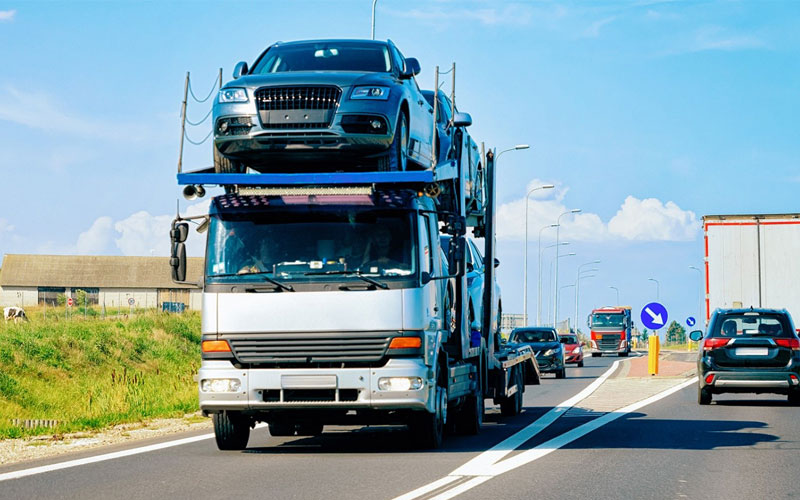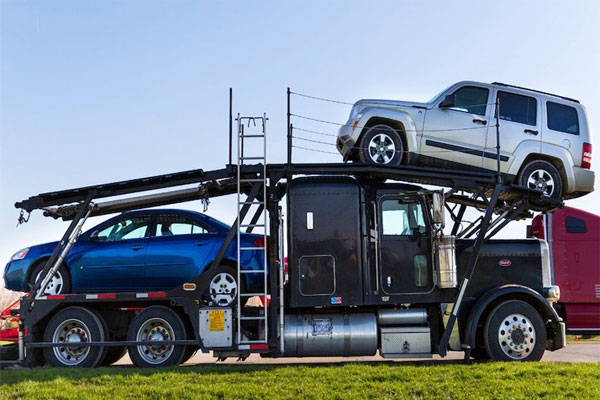
Understanding the car shipping process is essential for anyone looking to transport their vehicle, whether across the state or internationally.
In this article, we’ll try to clarify each step of the process, from selecting a shipping company to receiving your vehicle at its destination. By understanding what to expect, you can ensure a smooth and stress-free experience.
Selecting a Car Shipping Company
Before the car shipping process can begin, you need to make an important decision and that is choosing the right shipping company. It’s important to conduct thorough research, comparing services, prices, and customer reviews. Look for companies that are licensed, bonded, and insured, ensuring they meet legal and safety standards.
Consider factors such as their experience in the industry, the range of services they offer (like door-to-door or terminal-to-terminal shipping), and their policy on insurance coverage. Take a peek here https://www.nyoooz.com/features/automobile/how-does-auto-transport-work.html/4811/.
Getting a Quote and Booking the Service

Once you’ve selected a shipping company, the next step is to get a quote. This usually involves providing details about your vehicle (make, model, year, and condition), the pickup and delivery locations, and your preferred shipping dates.
Quotes can vary based on factors like the distance, type of transport (open or enclosed), and time of year. After comparing quotes and services, you can book the service. This typically involves signing a contract and paying a deposit.
Preparing Your Vehicle for Transport
Preparing your vehicle for shipping is a crucial step. Start by cleaning your car, both inside and out, which helps in easily identifying any damages that might occur during transport. Remove all personal items and any loose parts or accessories.
Ensure that your car is in good running condition, with no leaks and a charged battery. If your car is non-operational, inform the shipping company, as it may require special arrangements. Check your tire pressure and lock your car, but don’t forget to disable the alarm.
Vehicle Pickup and Inspection
On the day of pickup, the shipping company’s driver will arrive to load your vehicle onto the transport truck. Before loading, you and the driver will inspect the vehicle together, noting any existing damage.
This inspection is documented in a report known as the Bill of Lading, which you should receive a copy of. It’s crucial to be present during this inspection to ensure all pre-existing conditions are accurately recorded.
The Shipping Process
Once your vehicle is loaded onto the truck, the shipping process begins. The duration of the shipping depends on factors like the distance, route, and traffic conditions. During transport, your vehicle is secured and monitored.
Many shipping companies offer tracking services, allowing you to monitor the progress of your shipment online. This can provide peace of mind and keep you informed about the estimated delivery time.
Insurance and Handling Claims
You should know that the best cheap auto transport companies provide basic insurance coverage, but it’s advisable to review the coverage details and consider purchasing additional insurance for higher-value vehicles. In case of any damage during transport, report it immediately to the shipping company.
The Bill of Lading serves as a key document in filing an insurance claim. Be prepared to provide photographic evidence of the damage and cooperate with the insurance company’s claims process.
Understanding the Costs Involved
Understanding the costs involved in car shipping is essential for budgeting and avoiding surprises. The total cost typically includes the shipping fee, insurance, and any additional services like expedited shipping or special handling for non-operational vehicles.
Be aware of potential hidden fees and ask the shipping company for a detailed breakdown of the costs. Discover more on this page.
Choosing the Right Type of Transport
Choosing between open-air and enclosed transport is an important decision in the car shipping process. Open-air transport is more popular and cheaper, but the weather will be able to get to your car.
More safety is provided by enclosed transportation, but it costs more. The choice you make will rest on your budget, the value of your car, and how far the shipment needs to go.
Dealing with Delays and Unexpected Challenges
While most car shipments go smoothly, delays can occur due to weather, traffic, or logistical challenges. It’s important to maintain a level of flexibility and have open communication with the shipping company. They should provide updates and be transparent about any delays and the estimated time of arrival.
Delivery and Final Inspection
Upon reaching the destination, the shipping company will contact you to arrange the delivery. During delivery, a final inspection of the vehicle is conducted to ensure that it has arrived in the same condition as it was picked up.
This is done by comparing the vehicle’s current state to the initial Bill of Lading report. If there are any discrepancies or new damages, they should be noted on the Bill of Lading before signing off on the delivery. It’s important to conduct this inspection thoroughly to facilitate any potential insurance claims.







